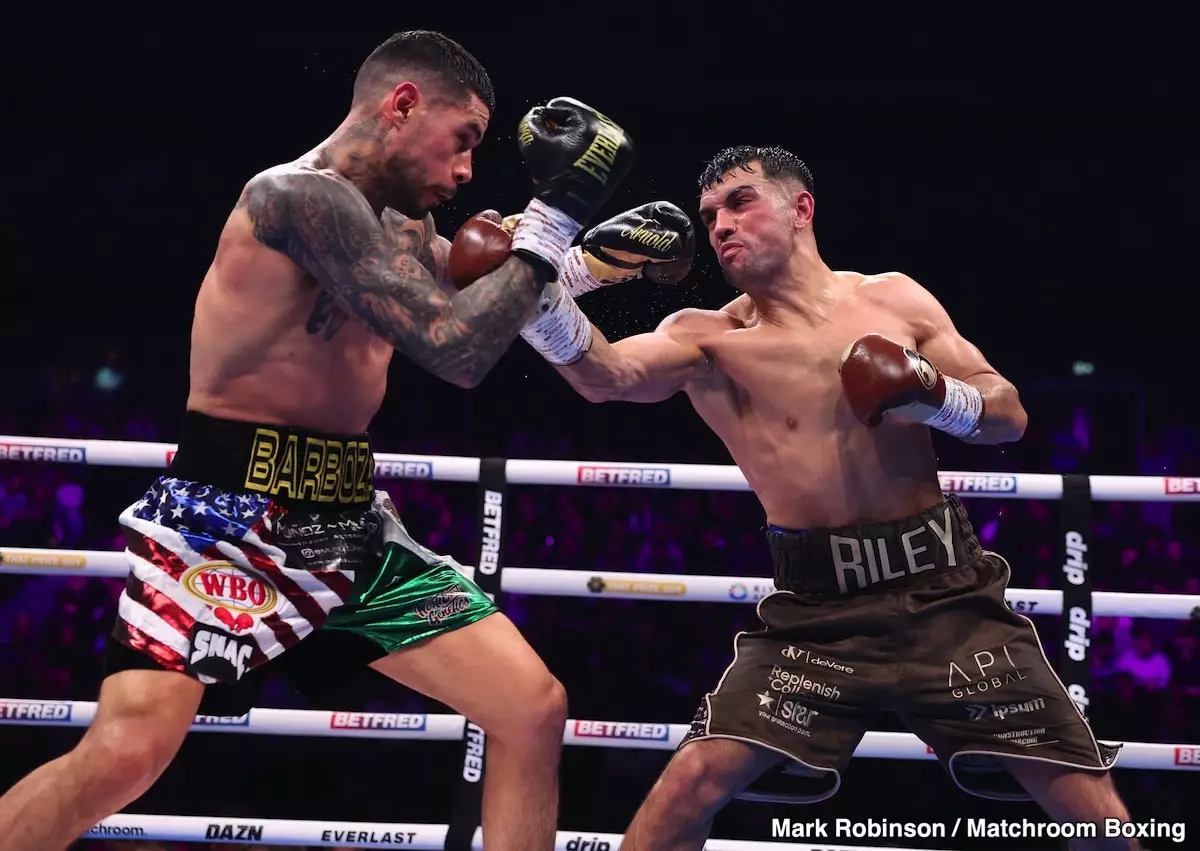In the thrilling yet perilous world of boxing, age is often a double-edged sword, and few understand this better than Jamie Moore, a former boxer turned a knowledgeable trainer. His perspective on the imminent return of Manny Pacquiao, the 46-year-old ring legend, is not merely a reflection of fan opinions but rather a complex professional dilemma that intertwines respect for the sport’s greats with the ambitions of his own fighter, Jack Catterall. Moore finds himself in an unusual spot, torn between two roles: the dedicated trainer and the mentor who recognizes the potential hazards of pitting a young fighter against an iconic, yet aging, champion.
Pacquiao’s illustrious career has solidified his place in boxing history, but now that he is stepping back into the ring, Moore’s apprehensions reflect a broader concern about whether age can still command respect and triumph in a sport dominated by youthful vigor. As Moore states, his instinct is to protect his fighter and prepare him for the ultimate challenges ahead. This begins to juxtapose the eternal quest for glory that drives athletes, particularly in a sport as unforgiving as boxing.
The Towering Shadow of Respect
Moore’s reservations about Pacquiao’s return resonate deeply with the wrestling ethos of respect. He knows that a fighter’s legacy should not merely be evaluated by their past glories but also by their current physical and mental states. In boxing, the consequences of a mismatch—whether due to age, fitness, or sheer timing—can be dire, and Moore’s concern for Catterall’s safety highlights the potential pitfalls of such a scenario. The idea of his fighter stepping into the ring against someone like Pacquiao, who has given so much to the sport, invokes a need for caution despite the allure of that challenge.
Moore’s credibility as a trainer adds weight to his commentary, as he navigates the delicate balance between chasing titles and ensuring his boxer’s health. Competing against a living legend offers a unique thrill, but it also raises ethical questions about the differences in experience, skill, and physical declines that accompany advancing age. Such considerations make Pacquiao’s comeback less a celebration of athleticism and more a potential ticking time bomb, where nostalgia and reverence could lead to real harm.
A Divergent Fork in the Road
Amidst these contemplations, the question arises: what does Pacquiao stand to gain from this comeback? If he defeats Mario Barrios and reclaims the WBC welterweight title, the path forward becomes convoluted. Would he defend his title against Catterall, a fighter who, although capable, does not carry the marketability of more celebrated opponents? Herein lies the crux of Moore’s dilemma. The lucrative allure of fighting high-profile opponents looms larger than the decision to defend against a less flashy yet deserving contender. This brings about a broader commentary on the business side of boxing, where titles become commodities, shuffling the prospects of deserving fighters like Catterall to the sidelines.
Catterall’s potential to face Pacquiao presents a pawn in this chess game of legacy and ambition. Though he might relish the opportunity to fight a titan of the sport, Catterall is also well aware that such an opportunity could effectively rob him of what he has worked tirelessly for—a world title that he rightfully seeks. Moore’s role as protector against the allure of age-dominating young talent reframes the discussion not only around the fighters but also around the systemic flaws in how boxing treats its aging icons.
The Urgency for Change
As the dynamics in boxing continue to evolve, it becomes increasingly important to assess not just the fighters but also the structure of the sport. Moore’s insights could serve as a catalyst for dialogues on athlete welfare, the ethics of matchmaking, and the transition of respected veterans into retirement. While Pacquiao’s determination is commendable, one must consider the potential ramifications on the sport’s integrity and future.
Maintaining safety and dignity in boxing should transcend profit margins and nostalgic zeal. Jamie Moore’s apprehension towards the imminent fight carries weight not only for Catterall but for every young fighter looking ahead in a sport where the looming shadow of age and experience repeatedly shapes the longstanding narrative. As fans, fighters, and trainers alike grapple with these issues, the hope would be for a recognition that the journey of boxing extends beyond singular achievements and deserves a more sustainable, respectful approach to the end of illustrious careers.


Leave a Reply